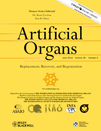Immunoisolation of Islets in High Guluronic Acid Barium-Alginate Microcapsules Does Not Improve Graft Outcome at the Subcutaneous Site
Abstract
The survival and function of alginate microencapsulated islets is suboptimal when transplanted to the intraperitoneal site of diabetic animals. The large capacity and convenience of the subcutaneous site make it an appropriate and attractive alternative for microencapsulated grafts. Nonencapsulated and high guluronic acid barium-alginate microencapsulated islets were transplanted to the intraperitoneal and subcutaneous sites of diabetic mice. Microencapsulation improved graft success up to 28 days at the intraperitoneal site but not at the subcutaneous site. Samples of microencapsulated islets transplanted into normoglycemic mice confirmed that insulin secretion, insulin content, and adenosine triphosphate content were reduced more significantly in subcutaneous graft islets than intraperitoneal graft islets after 7 days. In addition, a greater proportion of dead cells were observed in the subcutaneous graft islets than in intraperitoneal graft islets after 28 days. We conclude that using alginate microencapsulated islets transplanted to the unmodified subcutaneous site is insufficient to reverse the diabetic state. This finding is likely to be related to the inability of the site to support islet function and viability.




